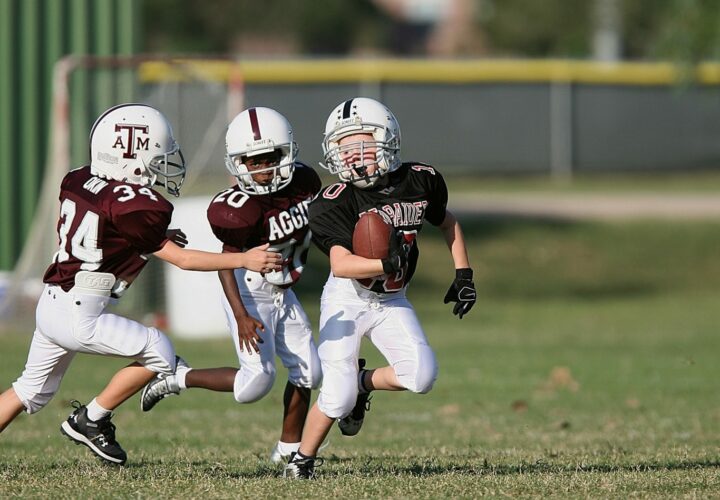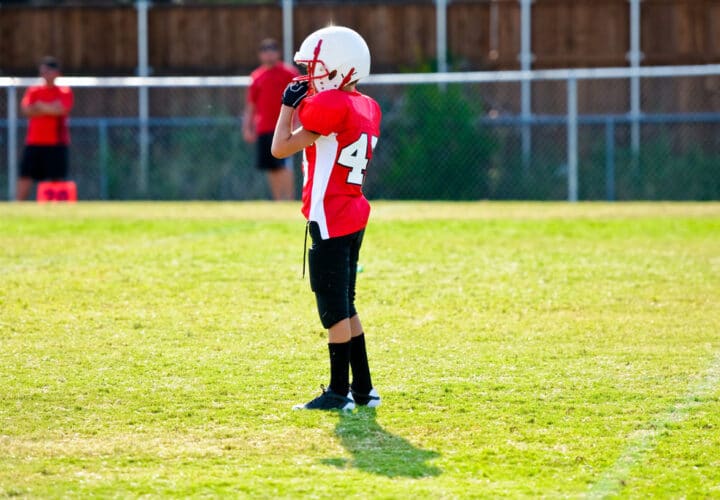A recent study conducted by the Virginia Tech Helmet Lab dug into a growing concern among sports fans: Youth football players are more vulnerable to concussions and other brain injuries than adult players.
Among football players in the U.S., children between the ages of nine and 14 make up the largest demographic, making them a prime target for concussion research. However, head injury research has primarily focused on high school, college and professional players, leading to limited understand of concussion causes and effects in youth football.
Delving Into Youth Football Concussions
Brain cells are protected by a fatty layer of proteins and fatty substances known as myelin, which forms protective sheaths around the spinal cord as well. The myelin sheath allows electrical impulses to transmit quickly along nerve cells; if the myelin is damaged, these impulses can slow down. This is especially a concern for younger players, whose myelin sheaths haven’t fully developed.
Younger players also typically have larger heads relative to their bodies than older players, coupled with weaker neck musculature that reduces their ability to absorb the force of an impact. Because of this, researchers had assumed that younger players were more vulnerable to concussions, but it wasn’t until the current study that those fears could be confirmed.
“Children aren’t just scaled-down adults,” said Steve Rowson, associate professor of biomedical engineering and mechanics and director of the Virginia Tech Helmet Lab, in a news release. “Differences in anatomy and physiology, like head-neck proportions and brain development, contribute to differences in tolerance to head impact. These results can lead to data-driven interventions to reduce risk in youth sports.”
Published in the January issue of the Annals of Biomedical Engineering, the study tracked six youth football teams in Virginia, North Carolina and Rhode Island. Rowson and Stefan Duma, a professor of engineering at Virginia Tech, collaborated with researchers at Brown University and Wake Forest University to track more than 100 players.
As part of the study, the players wore sensor-lined helmets over four seasons’ worth of practice and games. The sensors measured the acceleration of the players’ heads, recording thousands of impacts over the course of the study. All on-site concussions were diagnosed by clinicians, and neurological testing before and after each season measured the cognitive function of the players.
The data collected allowed researchers to develop a mathematical analysis of head impacts, as well as their relationship to concussions. They found that youth players, on average, are more susceptible to experiencing concussions at lower levels of acceleration than older players.
Breaking down the math, the average concussive impact among high school and collegiate players is associated with a head acceleration of around 102 g–the unit of measurement known as gravitational force equivalent, or g-force. In youth players, according to the new study, the average concussive impact was associated with a head acceleration of only 62 g, just 61 percent of the required force. However, the rotational acceleration values associated with concussions were similarly reduced, from 4,412 rad/s2 (the unit for rotational speed) in adults to 2,609 rad/s2 in youth players, a 60 percent decrease in force.
“These numbers prove for the first time that youth players are at a higher risk of injury at lower head accelerations,” Duma explained, “but it is important to note that the overall head acceleration exposure in youth football is much lower than in adult football.”
Contact Sports and Brain Injury Research
Researchers have been examining the dangerous effects of concussions among athletes and youth football in recent years, mostly focusing on contact sports like football or hockey. One past study found that even just a single season of youth football could cause structural changes in the brain. Another study used a blood test to help identify smaller, subconcussive brain injuries in children, which are more subtle but could cause lasting damage in the brain.
However, despite the increased awareness on sports-related brain injuries, youth football concussions are relatively rare. Younger players collide with less force than their adult counterparts, making them less likely to jostle the brain enough to cause serious injury.
As with any sport, however, the chance of injury does exist. Effective protective equipment is critical—which, according to Duma, is the main takeaway of the study. Data on the levels of acceleration that put youth players at risk for concussions creates a benchmark for future helmet testing.
“No one had ever come up with a rating system tailored to youth helmets, partly because the data didn’t exist,” said Duma. “Now we can evaluate helmets based on the actual risks youth players experience, and companies can use that information to design models specifically for this large group of players.”





